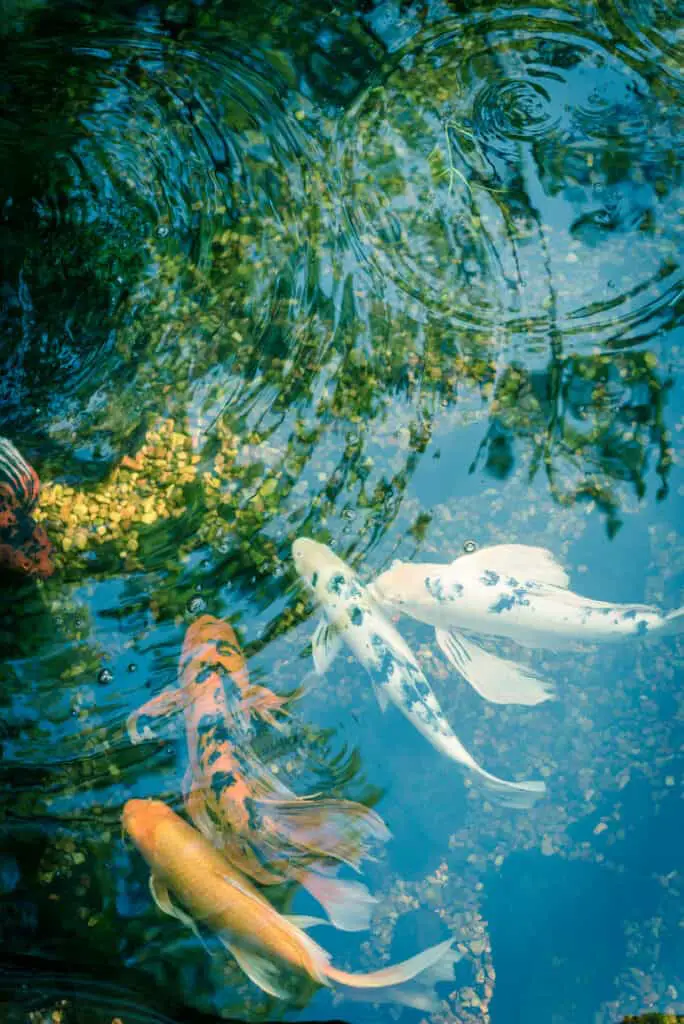
Many new koi pond owners are perplexed that it is best practice to keep a pond filter running 24/7. Could a pond filter really be that important? Is it not more energy efficient to turn it off during certain times of the day or the winter?
Experts recommend keeping a pond filter running continuously throughout the year to keep the water clean and clear. Pond filters not only remove organic matter and debris from the water but also filter out toxins so that fish can live comfortably and healthily.
A pond filter is one of the most important equipment in a koi pond. Here, we discuss the importance of keeping your pond filter running all the time, the differences between running mechanical filters and biological filters, and we give you hints on how to save electricity.
Pro Tip: If you’re tired of wasting money and making costly mistakes on the koi-keeping hobby or are thinking about buying koi fish but don’t know where to start, I strongly suggest you check out this ebook. I recently read this ebook, and it contains SO much useful information, such as:
- 3 proven steps to identify koi fish diseases
- WARNING: 3 things you should NEVER do when it comes to caring for koi
- When to seek professional help when it comes to looking after your koi
The Importance Of Running A Pond Filter 24/7
Without an in-depth understanding of the importance of a pond filter and how they work, it can be difficult to fathom why you should keep one running all the time.
Pond filters serve the following purposes in a koi pond:
- It keeps toxin levels in the water down, creating a safe environment for fish.
- It keeps the water free from debris and floating algae, preventing the pond from turning into a pool of pea soup.
Does A Pond Filter Need To Run Continuously?
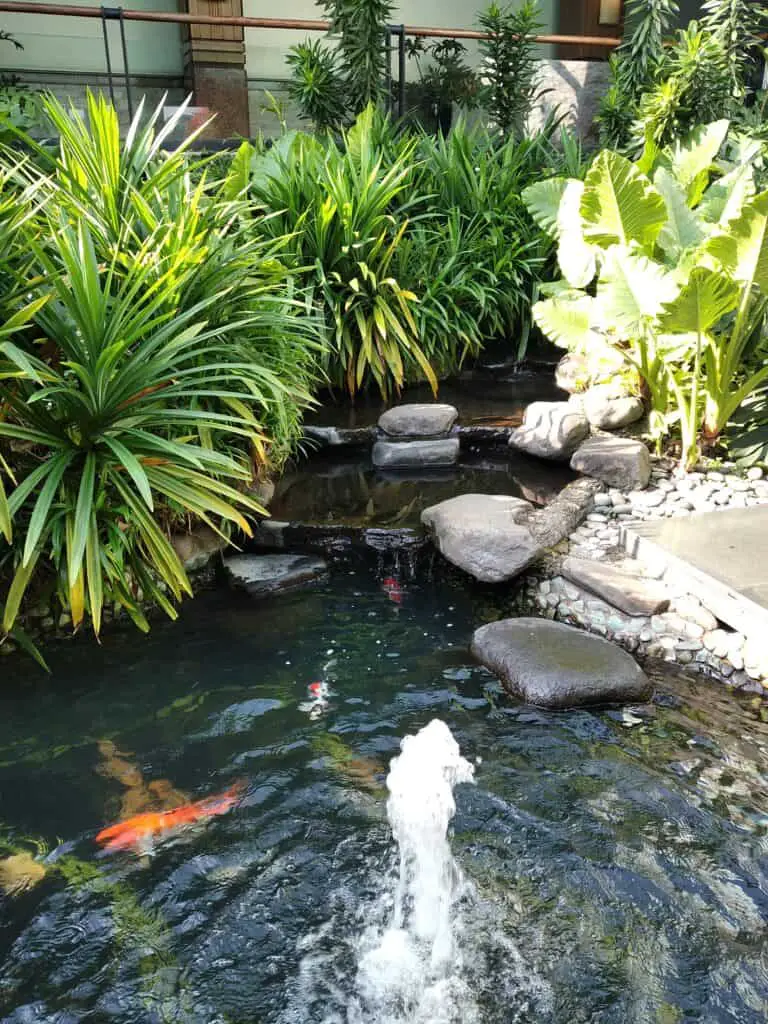
Is it really necessary to keep a pond filter running all the time? This is one of the most commonly asked questions by new koi pond owners.
Many people assume that because they can keep their swimming pool clean by running the filter for a handful of hours a day, they can do the same with their pond. However, unlike pools, fishponds are not filled with powerful chemicals that kill algae and microorganisms in the water.
It is absolutely necessary to run a koi pond filter 24 hours a day, seven days a week, 365 days a year! No exceptions. Do not turn the pond filter off at night or during the winter.
For water gardens, wildlife ponds with only one or two fish, or ornamental ponds without any fish in them, you can certainly get away with only running the filter for part of the day to keep the water clear. However, when you add fish to a pond, you must install a system to process their biological waste.
Without a good filtration system that runs all the time, ammonia and nitrates from the fish’s waste would build up in the water. Not only would this be toxic for the fish, but it would also lead to algae blooms. The water would quickly turn murky and green.
When Should I Turn Off My Pond Filter?
You should only turn off your pond pump and filter when you perform maintenance on the filter. Pond filters need to be cleaned regularly to keep them working at their maximum efficiency.
If you run your pond filter continuously without ever cleaning it, you will notice a decline in water clarity over time.
Biological filters do not need cleaning, especially if the water flowing into the filter is mechanically pre-filtered. Cleaning the filter media inside biological filters twice or three times a year is more than enough if the water flowing into the filter is not pre-filtered.
Allowing the beneficial bacteria that build up inside biological filters to remain intact helps the filter work. It is counter-intuitive to clean biological filters often.
Mechanical filters, on the other hand, should be cleaned out as often as possible. Try to clean out these filters daily, once a week, or at least once a month.
How To Clean A Fishpond Filter The Right Way
When cleaning the sponge filters inside biological pond filters, you should not use regular tap water! The correct way to clean these types of filters is with pond water.
Water from the mains water tap contains chlorine to kill bacteria. If you wash a biological filter with tap water, the beneficial bacteria will be killed by the chlorine in the water.
Here’s the right way to clean your koi pond filter:
- Get a plastic tub or bucket large enough to fit the filters into.
- Scoop out clean pond water into the container.
- With the pond pump switched off, remove the sponges from inside the filter.
- Put all the sponges into the pond water and gently move them around to remove bits of organic matter and debris. It should be pretty easy to get 90% of the gunk off. Do not spend time on getting the sponge spotless.
- When the sponges are more or less clean, place them back into the filter housing, reassemble the filter, and switch the pump back on.
Should You Turn Off A Pond Pump During Winter?
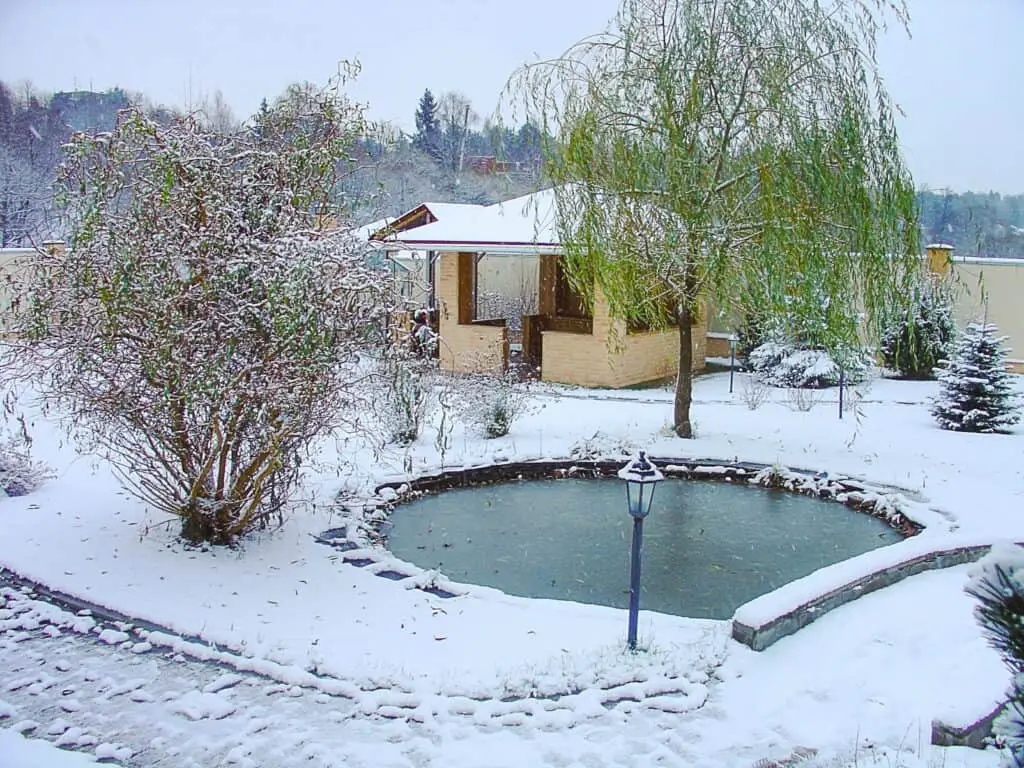
In the regions of the world where temperatures drop below zero during the winter, there is the issue of fishponds icing over. Pond owners are advised to switch off their pond pumps during winter to prevent water from freezing in the pump and damaging it.
This advice is fine for ponds without any fish, but in a koi pond, you should not turn off the pond pump over winter. Doing so would stop water from being pushed through the pond filter, so you would effectively be switching the pond filter off all winter.
Instead, you should keep the pump and filter running during winter and put a heater in the pond to stop the water from freezing. If the water continuously circulates and stays just above 32 degrees F, the pond will not freeze over.
How Koi Pond Filters Work?
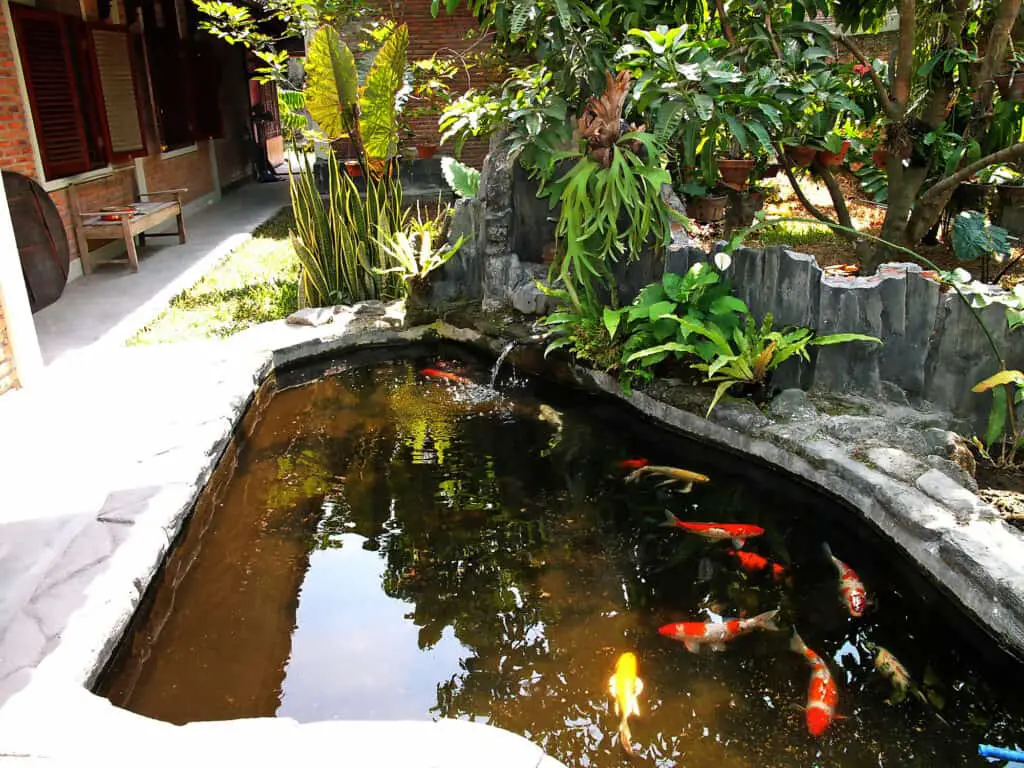
To further understand the key role that koi pond filters play, let’s take an in-depth look at how different types of pond filters work.
There are two main types of pond filtration systems: mechanical filters and biological filters.
Mechanical Filters
These filters physically trap suspended sediment, algae, debris, and organic matter as water flows through the filter media. Dirty water is pumped into one end of the filter, a spongy filter or net catches the solids, and clear water flows out the other end.
However, the water that comes out has not been detoxified. Mechanical filters cannot remove dissolved waste, like ammonia, from the water.
Biological Filters
Biological filters employ beneficial nitrifying bacteria to detoxify pond water. Biological filter systems contain various types of bio-media – filter mats, brushes, or lots of tiny beads. The bio-media creates a large surface area that bacteria can colonize.
Pond water that has been mechanically pre-filtered is pumped into one end of the filter. As the water moves through all the bio-media, the bacteria convert ammonia into nitrites and then into nitrates. Detoxified water flows out the other end of the biological filter.
If biological filters are switched off, and no water moves through them, the beneficial bacteria are starved of oxygen and die. As they decompose, they release ammonia back into the water.
This is another reason why it is critical to keep a koi pond filter running all the time!
The Ideal Filtration System For A Koi Pond
Ideally, a koi pond should use both mechanical and biological methods of filtration. Small koi ponds with only a few fish can cope with only a biological filter. Larger ponds require both types of filters.
Some types of pond filters use gravity flow to keep water moving through the filter media. These are an excellent choice because they have no moving parts, like pressurized filters. Therefore, they require less upkeep and last longer.
It is crucial to buy a filtration system that is large enough for your pond. The larger the pond and the more fish you have, the more water there is that needs to be filtered, so a larger filter is required.
For a koi pond, at least all the water in the pond should be filtered every hour. Therefore, a 5000-Gallon koi pond needs a filter and pump rated at least 5000 gallons per hour.
If a pond filter and pump are inadequate, all the water in the pond will not be cleaned, and the pond will look murky. There will be a build-up of ammonia over time.
The pond pump’s flow rate must not exceed the filter’s output capacity! If water moves through the filter too fast, it will not be cleaned properly. The water needs to spend enough time passing through the filter.
Lastly, a koi pond needs an air pump to keep the water well-aerated. Having the right levels of oxygen in the water is important for the health of the koi and for the functioning of the filter.
The beneficial bacteria inside biological filters are aerobic. They need oxygen from the water to survive. If the water is not oxygenated enough, a biological filter will not work as efficiently as it should.
Is It Possible To Over-Filter A Fish Pond?
It is better to choose a filter that is larger than what your pond needs. There are no harmful effects of filtering the water more than required. Your pond will just look beautifully clean and clear.
Does A Pond Filter Need Its Own Dedicated Pump?
For larger ponds, it is often difficult to find one pump that is the right size and capacity to power the filter, and run the waterfall, and circulate all the pond water. It is better to have different pumps for each piece of equipment.
If a pond filter has its own pump, you can turn off the other pumps when you want. You can keep the filter running at night but switch off the water feature if you want to reduce noise and save electricity.
Reduce The Pump’s Flow Rate At Night To Save Energy
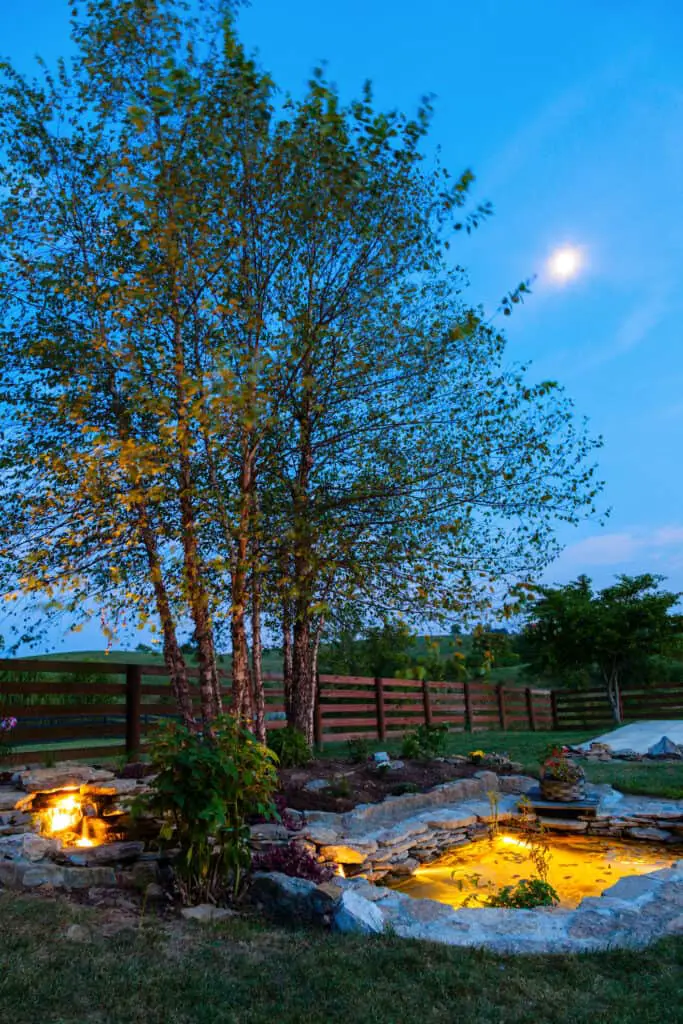
While switching your fishpond’s filter off is not a good way to cut down on your energy use, there is another better way to save some electricity.
Fish are less active at night. They use less oxygen, eat less, and produce less waste. Therefore, you can turn the filter pump’s flow rate down overnight. By doing this, the pump will use less energy during the night, so you will save on your electricity bill.
You must remember to turn the flow rate back up in the morning! It can be tedious turning the pump down every evening and up every morning.
Digital variable flow filter pumps are available. These allow you to easily change the flow rate with just the click of a button.
Older pond pumps are a lot less energy efficient than newer models. Rather than finding ways to save electricity with your old pump, you can save more by investing in a new pump.
How Long Will A Pond Pump Last If It Runs Constantly?
There are so many different pond pumps on the market, and the various brands differ greatly in quality. It is near impossible to give a general estimate for how long a pump will last without knowing the type of pump.
Pond pumps are designed to run constantly, so never switching the pump off will not harm its lifespan. A relatively good quality pump that runs 24/7 will last for about five years on average.
With regular maintenance, a pond pump can last for much longer. If you take good care of a pond pump, it can last for as long as 15 years.
Conclusion
Koi ponds must have a filter constantly running to stay crystal clear. One should never switch off the pump that feeds water through the filter – not during the winter or at night. The filter is not only for removing debris and organic waste from the water. The filter detoxifies the water by removing ammonia. Switching the filter off can cause toxin levels in the water to rise.
Resources
https://www.kodamakoigarden.com/understanding-koi-pond-filter-system/
https://homeguides.sfgate.com/should-keep-pond-pump-running-winter-80226.html

